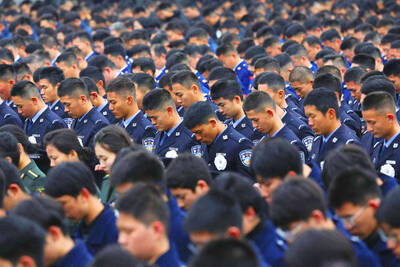It began with a bumpy landing and ended with a touching tweet.
“I’m feeling a bit tired, did you get all my data? I might take a nap...” tweeted @Philae2014.
It was early on Saturday morning. After 57 hours performing science experiments on the surface of comet 67P/Churyumov-Gerasimenko, the audacious Philae mission was coming to an end. Not enough light was hitting its solar panels and the spacecraft was preparing to hibernate, but in true Hollywood style, Philae heroically managed to send back all of its data just before the curtain fell.
Contact was lost at 0:36am GMT, a few minutes before the end of the communications window.
Within the final blocks of data that Philae returned were readings from an instrument called COSAC, the Cometary Sampling and Composition experiment. They could reveal the molecular ingredients that became life on Earth, since comets are remnants from the formation of the planets 4.6 billion years ago. Their icy bodies preserve the primordial organic molecules that were incorporated into the Earth and led to the origin of life.
“The data collected by Philae and Rosetta are set to make this mission a game-changer in cometary science,” European Space Agency (ESA) Rosetta project scientist Matt Taylor said.
There is still a chance that Philae could be revived. The comet is beyond Mars, but in August next year, it will be close to Earth’s orbit and sunlight will be stronger.
“We still hope that at a later stage of the mission, perhaps when we are nearer to the Sun, we might have enough solar illumination to wake up the lander and re-establish communication,” said Stephan Ulamec, Philae lander manager at the German Aerospace Center (DLR).
In the meantime, the science teams are beginning to analyze the data sent back by the spacecraft. The first results are expected to be presented at the American Geophysical Union conference in San Francisco next month. The Rosetta mission is to continue for another 20 months, studying the comet and listening for Philae to wake up.
Philae touched down on Wednesday afternoon after a seven-hour descent from Rosetta. Earlier in the day, engineers realized that the thruster system on Philae was not responding. The thruster was designed to hold Philae onto the surface of the comet as harpoons were fired to anchor it. Without it, the landing would be much riskier.
At the moment of touchdown, the harpoon system did not fire. For a while, it looked as if Philae was stable. Celebrations began at the European Space Operations Center in Darmstadt, Germany. However, at the lander control center in Cologne, Germany, researchers saw a different story. Magnetic data showed that Philae was still moving.
Philae had rebounded from the surface. In the weak gravity of the comet, Philae’s bounce took nearly two hours to complete. It fell and bounced a second time — though for just six minutes. It came to rest just before the communications window closed for the night. So pictures had to wait.
When images arrived, scientists were confused. Designed to show a 360? panorama of the landscape and horizon, some showed rock, others showed space with stars. Philae had come to rest on its side.
“We are exactly below a cliff, so we are in a shadow permanently,” said Jean-Pierre Bibring, Philae’s lead scientist at the Institut d’Astrophysique Spatiale, Universite Paris Sud in France.
In the shadows, there was not enough light to charge the secondary batteries. Everything had to be completed within the 60-hour lifetime of the primary battery.
“We juggled everything so that every instrument got to do a measurement, so we are very happy with the mission so far,” said Valentina Lommatsch, a member of the DLR’s lander team.
From orbit, Rosetta was trying to locate Philae. Data from the radar system pointed to a resting place about 1km away from the touchdown, near the wall of a large depression.
Strategies for moving Philae included flexing the landing gear to try to make it “hop” out into the sunlight. Engineers ran out of time, but managed to rotate the probe so a larger solar panel was pointing toward the single shaft of sunlight that was reaching the lander.
“At the end of this amazing rollercoaster week, we look back on a successful first-ever soft landing on a comet,” ESA Rosetta mission manager Fred Jansen said. “We now look forward to many more months of exciting Rosetta science and possibly a return of Philae from hibernation.”

The Burmese junta has said that detained former leader Aung San Suu Kyi is “in good health,” a day after her son said he has received little information about the 80-year-old’s condition and fears she could die without him knowing. In an interview in Tokyo earlier this week, Kim Aris said he had not heard from his mother in years and believes she is being held incommunicado in the capital, Naypyidaw. Aung San Suu Kyi, a Nobel Peace Prize laureate, was detained after a 2021 military coup that ousted her elected civilian government and sparked a civil war. She is serving a

China yesterday held a low-key memorial ceremony for the 1937 Nanjing Massacre, with Chinese President Xi Jinping (習近平) not attending, despite a diplomatic crisis between Beijing and Tokyo over Taiwan. Beijing has raged at Tokyo since Japanese Prime Minister Sanae Takaichi last month said that a hypothetical Chinese attack on Taiwan could trigger a military response from Japan. China and Japan have long sparred over their painful history. China consistently reminds its people of the 1937 Nanjing Massacre, in which it says Japanese troops killed 300,000 people in what was then its capital. A post-World War II Allied tribunal put the death toll

‘NO AMNESTY’: Tens of thousands of people joined the rally against a bill that would slash the former president’s prison term; President Lula has said he would veto the bill Tens of thousands of Brazilians on Sunday demonstrated against a bill that advanced in Congress this week that would reduce the time former president Jair Bolsonaro spends behind bars following his sentence of more than 27 years for attempting a coup. Protests took place in the capital, Brasilia, and in other major cities across the nation, including Sao Paulo, Florianopolis, Salvador and Recife. On Copacabana’s boardwalk in Rio de Janeiro, crowds composed of left-wing voters chanted “No amnesty” and “Out with Hugo Motta,” a reference to the speaker of the lower house, which approved the bill on Wednesday last week. It is

FALLEN: The nine soldiers who were killed while carrying out combat and engineering tasks in Russia were given the title of Hero of the Democratic People’s Republic of Korea North Korean leader Kim Jong-un attended a welcoming ceremony for an army engineering unit that had returned home after carrying out duties in Russia, North Korean state media KCNA reported on Saturday. In a speech carried by KCNA, Kim praised officers and soldiers of the 528th Regiment of Engineers of the Korean People’s Army (KPA) for “heroic” conduct and “mass heroism” in fulfilling orders issued by the ruling Workers’ Party of Korea during a 120-day overseas deployment. Video footage released by North Korea showed uniformed soldiers disembarking from an aircraft, Kim hugging a soldier seated in a wheelchair, and soldiers and officials